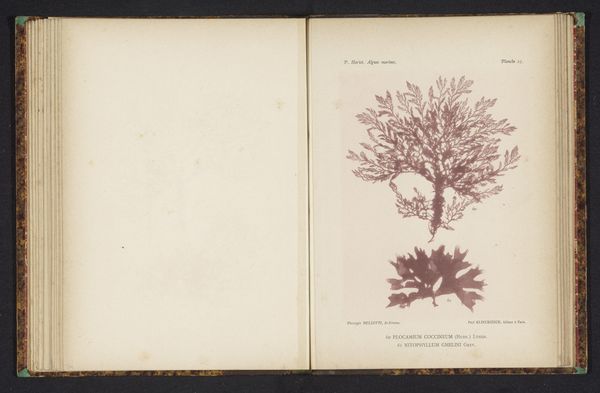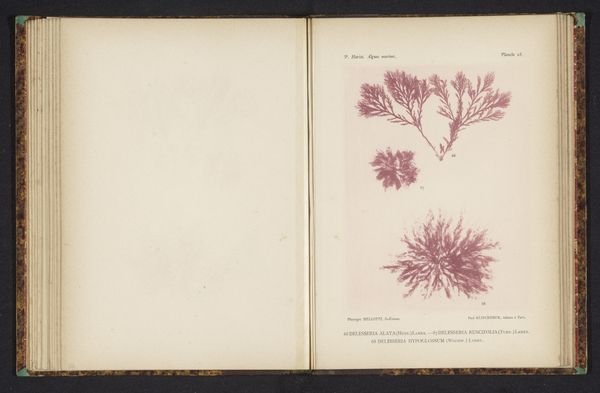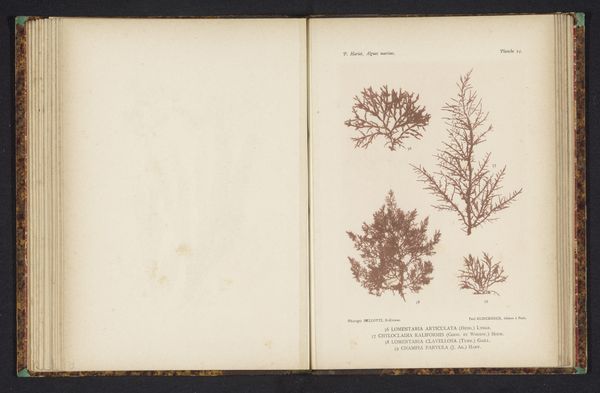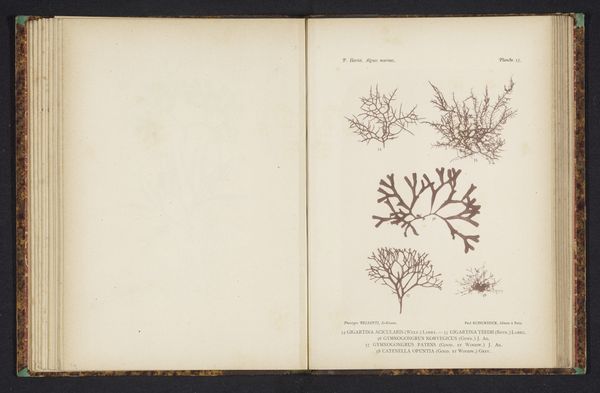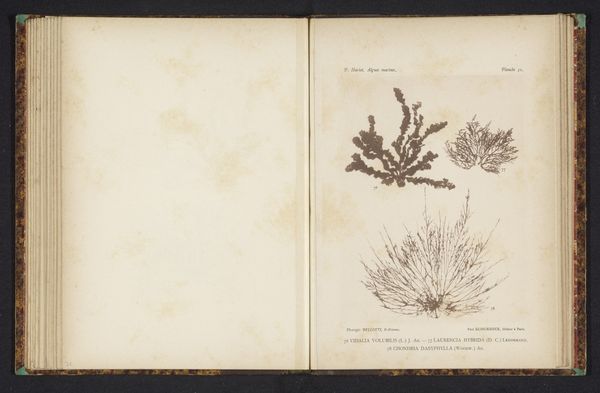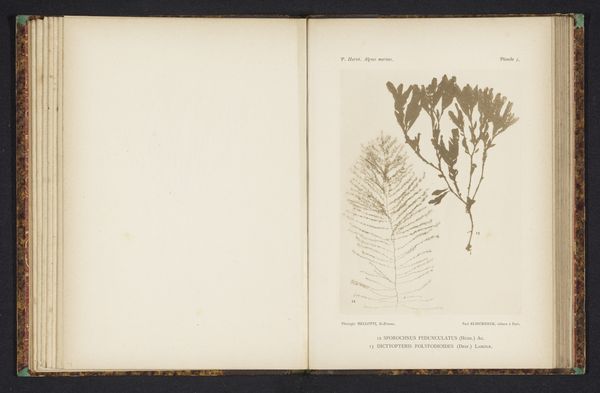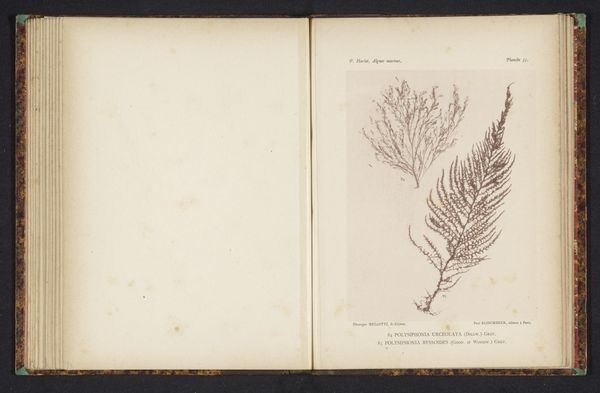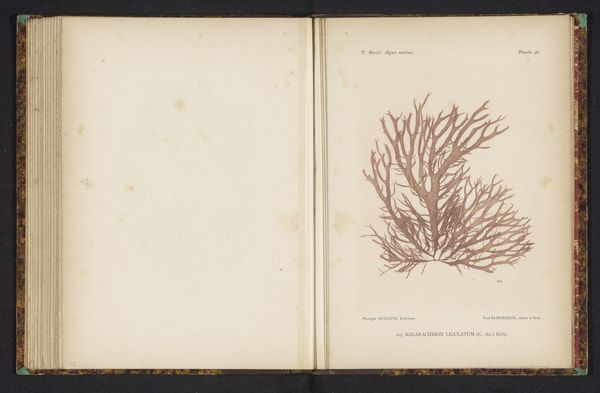
drawing, print, paper
#
drawing
# print
#
paper
#
coloured pencil
#
line
#
academic-art
#
realism
Dimensions: height 161 mm, width 119 mm
Copyright: Rijks Museum: Open Domain
This image shows an arrangement of seaweed specimens, reproduced through an etching. We don't know who made this image or when it was made. Such images are found in the scientific publications known as Herbariums, which were popular from the 18th century. During the enlightenment, there was a great interest in observing, classifying, and recording the natural world. The enlightenment was a European intellectual movement that promoted reason, science, and individualism. As a result, many scientific societies and museums were established during this time, and these institutions often commissioned artists to create detailed illustrations of plants, animals, and other natural phenomena. The classification of nature was seen as a social good and a way to improve society by making it more rational, more prosperous, and more free. When we look at images like this today, we should remember that there is no such thing as a neutral representation, and the study of nature was always tied to the values of those who studied it. To understand the images better, we can consult natural history collections and the records of scientific societies.
Comments
No comments
Be the first to comment and join the conversation on the ultimate creative platform.
